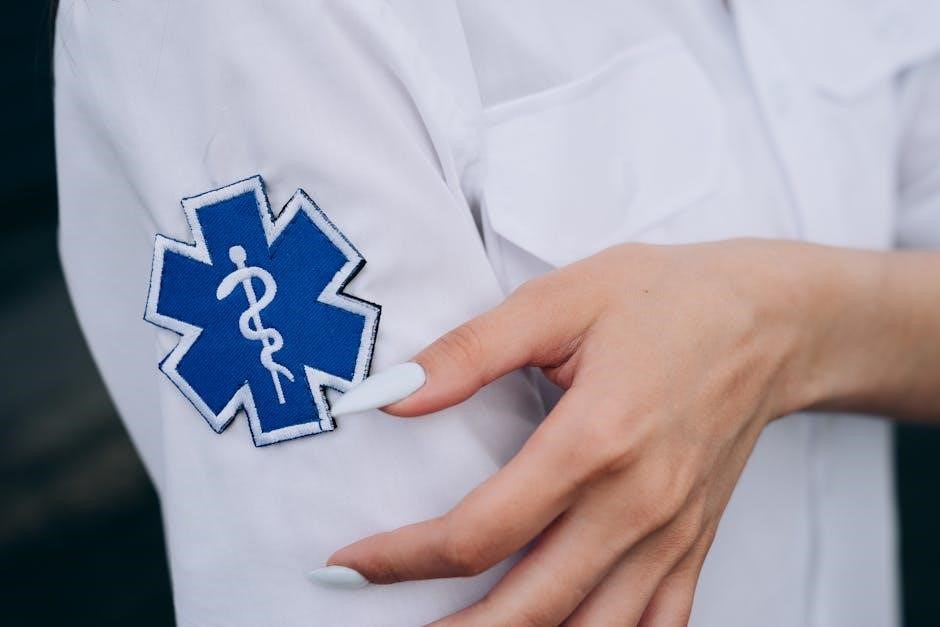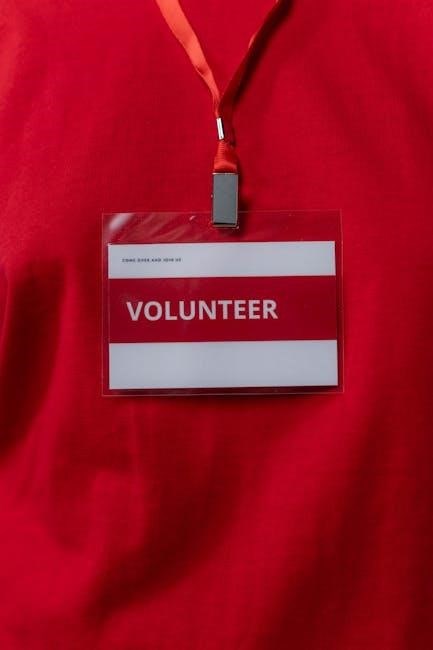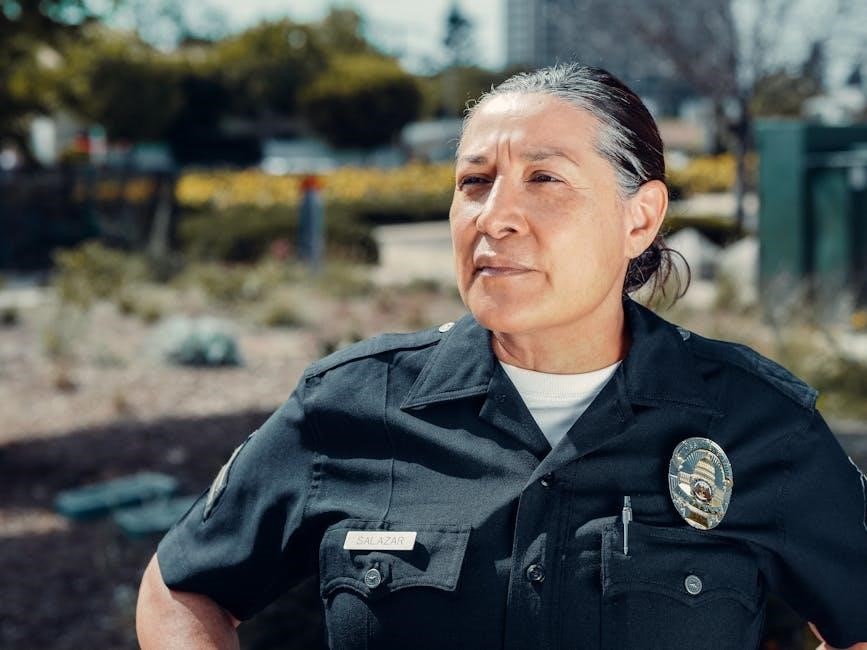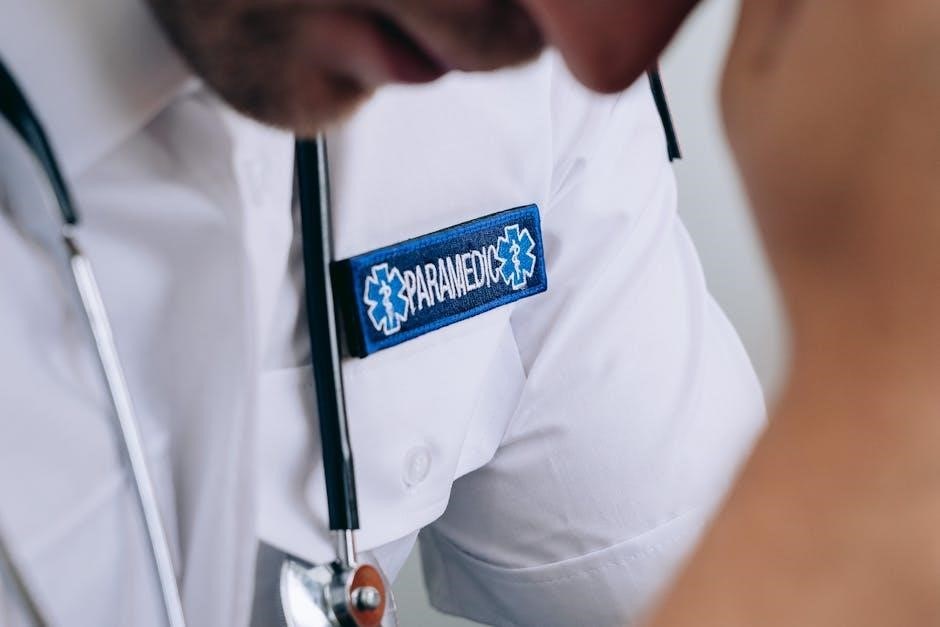The Junior First Aid Badge introduces young participants to essential life-saving skills, empowering them to respond confidently in emergencies. It focuses on basic care, safety practices, and preparedness, fostering responsibility and awareness. Earning this badge is a crucial step toward becoming a capable helper.
Understanding the Importance of First Aid Training for Juniors
First aid training is a vital skill for juniors, as it equips them with the knowledge and confidence to act in emergencies. By learning basic first aid, young individuals can provide immediate assistance, potentially saving lives or reducing the severity of injuries until professional help arrives. This training fosters a sense of responsibility and empowerment, encouraging juniors to take an active role in their communities. It also teaches them to remain calm and think critically in stressful situations, which are valuable life skills.
Moreover, first aid education helps juniors understand the importance of safety and prevention. By identifying potential hazards and knowing how to respond, they can contribute to creating safer environments for themselves and others. Engaging in first aid training also builds a foundation for further learning and community involvement, inspiring juniors to pursue roles where they can make a positive impact. Overall, first aid training is an essential part of preparing young individuals to handle emergencies effectively and responsibly.
Key Steps to Earn the Junior First Aid Badge
Earning the Junior First Aid Badge involves learning basic first aid, creating a family emergency plan, and practicing skills through activities like storytelling games. These steps help juniors develop confidence and readiness to assist in emergencies effectively.
3.1. Learning the Basics of First Aid
Learning the basics of first aid is the foundation for earning the Junior First Aid Badge. This step focuses on teaching young participants how to recognize common emergencies and respond appropriately. Juniors are introduced to essential concepts such as checking the scene for safety, calling for professional help when needed, and providing basic care until assistance arrives. They learn how to identify minor injuries like cuts, burns, and scrapes and understand how to use fundamental first aid techniques to treat them. Activities include creating posters that explain the “Check, Call, Care” framework, which simplifies the process of responding to emergencies. Through hands-on exercises and discussions, juniors gain confidence in their ability to assist others. This step also encourages juniors to engage with first responders, such as firefighters or paramedics, to gain insights into real-life emergency situations. By mastering these basic skills, juniors develop a strong understanding of first aid principles, preparing them for more advanced training in the future.
3.2; Creating a Family Emergency Plan
Creating a family emergency plan is a critical step in preparing juniors to handle crises effectively. This activity teaches young participants how to develop a clear, actionable plan that all household members can follow during an emergency. The plan should include essential contact information, such as phone numbers for parents, guardians, and nearby relatives, as well as the location of a safe meeting spot outside the home. Juniors are encouraged to involve their families in this process, fostering a sense of teamwork and responsibility. Additionally, they learn how to create a 911 call sheet, which outlines key steps to take when calling for emergency services. Practicing the plan through drills helps ensure everyone knows their role and can act quickly in a real emergency. This step not only equips juniors with practical skills but also strengthens their ability to lead and support their families during challenging situations. By completing this requirement, juniors demonstrate their understanding of preparedness and responsibility.
3.3. Practicing First Aid Skills
Practicing first aid skills is a fundamental part of earning the Junior First Aid Badge. This step involves hands-on activities that help juniors master the techniques they’ve learned. Role-playing scenarios, such as treating minor injuries or responding to burns, allow participants to apply their knowledge in a simulated environment. Games and group discussions can also be used to reinforce key concepts, making the learning process engaging and fun. For example, juniors might participate in storytelling games where they describe how they would handle a specific first aid situation. Additionally, creating posters or visual aids to explain the “Check, Call, Care” framework can help reinforce these critical steps. Practical exercises, such as bandaging and using a first aid kit, are also essential. By practicing these skills, juniors build confidence and develop the ability to act calmly and effectively in real emergencies. Regular practice ensures that they are well-prepared to assist others and take charge when needed. This hands-on approach makes first aid training both educational and empowering for young learners.

Requirements for Completing the Junior First Aid Badge
Earning the Junior First Aid Badge requires mastering the “Check, Call, Care” framework, building a portable first aid kit, and engaging with first responders. These steps ensure juniors are prepared to respond effectively in emergencies.
4.1. Understanding the ‘Check, Call, Care’ Framework
The “Check, Call, Care” framework is a fundamental approach to first aid response, designed to guide juniors through emergencies systematically. It emphasizes assessing the situation, seeking professional help, and providing appropriate care until further assistance arrives.
The first step, “Check,” involves evaluating the scene for safety and identifying the injured person’s condition. This includes checking for responsiveness, breathing, and visible injuries. The second step, “Call,” requires contacting emergency services or alerting a trusted adult. The final step, “Care,” focuses on administering basic first aid, such as stopping bleeding, immobilizing injuries, or performing CPR if necessary.
Mastering this framework helps juniors stay calm and act decisively in critical moments. It also reinforces the importance of prioritizing safety and knowing when to involve professional help. By following “Check, Call, Care,” young participants build a solid foundation for responding to emergencies effectively.
4.2. Building a Portable First Aid Kit
Building a portable first aid kit is a practical requirement for earning the Junior First Aid Badge. This kit should be easy to carry and contain essential items for immediate care in emergencies. Start with a sturdy, clean container like a plastic box or zipper bag. Include basic supplies such as bandages of various sizes, antiseptic wipes, gloves, and a first aid manual. Add tools like scissors, tweezers, and a thermometer for minor injuries. Consider personal needs, such as medications or allergy treatments, to customize the kit.

Organization is key—label each item and group them by purpose (e.g., wound care, bleeding control). Juniors should practice assembling and maintaining the kit, ensuring items are not expired or damaged. This activity teaches preparedness and responsibility, empowering young participants to provide effective first aid in real-world scenarios.
4.3. Engaging with First Responders
Engaging with first responders is a vital component of the Junior First Aid Badge requirements. This step allows young participants to gain insights from professionals, such as firefighters, police officers, or ambulance workers, who regularly handle emergencies. Inviting a guest speaker to share their experiences can inspire juniors and provide real-world context for their first aid training. Additionally, activities like visiting a fire station or observing first responders in a controlled environment can deepen their understanding of emergency protocols.
This interaction also encourages juniors to ask questions and learn about the critical role of first responders in saving lives. Understanding when and how to call for professional help is emphasized, reinforcing the importance of the “Check, Call, Care” framework. By connecting with these professionals, juniors build confidence in their ability to assist in emergencies and appreciate the value of teamwork in providing effective first aid.

Assessment and Recognition of Junior First Aid Skills
The assessment of Junior First Aid Skills ensures that participants have successfully grasped the essential knowledge and practical abilities required to earn the badge. This process typically involves a combination of demonstrations, quizzes, and hands-on exercises to evaluate their understanding of first aid principles and procedures. Instructors or trained leaders observe juniors as they apply their skills in simulated scenarios, such as treating minor injuries or responding to emergencies.
Upon completing all requirements, juniors are officially recognized with the Junior First Aid Badge, a proud symbol of their readiness to assist in emergencies. The badge serves as a motivational achievement, encouraging continued learning and confidence in applying first aid skills. Recognition often includes a ceremony or celebration, highlighting the importance of their accomplishments and reinforcing the value of preparedness and community service.
This step not only validates their hard work but also reinforces the practical application of their training, ensuring they are equipped to make a positive impact in real-life situations.

Practical Application of First Aid Knowledge
The practical application of first aid knowledge is a critical component of earning the Junior First Aid Badge. This phase involves hands-on activities and real-life simulations that allow juniors to demonstrate their skills in a controlled environment. For instance, juniors can practice treating minor injuries, such as cuts or burns, using the supplies from their portable first aid kits. Additionally, they engage in role-playing exercises to simulate emergency scenarios, such as calling 911 or assisting someone who is unwell. These activities help build confidence and ensure that juniors are prepared to act decisively in real-life situations.
Another key aspect is storytelling games with a first aid theme, where juniors share scenarios they’ve learned about and how they would respond. This not only reinforces their knowledge but also encourages creative thinking. Furthermore, inviting first responders to share their experiences provides juniors with real-world insights and inspiration. By applying their skills practically, juniors develop a strong foundation for becoming capable and compassionate helpers in their communities.
Earning the Junior First Aid Badge is a rewarding experience that equips young individuals with essential life-saving skills and confidence. By mastering the ‘Check, Call, Care’ framework, building a portable first aid kit, and engaging with first responders, juniors gain a solid foundation in emergency preparedness. These experiences not only empower them to help others but also foster a sense of responsibility and community involvement.
After completing the badge, juniors are encouraged to continue their first aid education by exploring advanced training opportunities. They can participate in workshops, join community safety programs, or assist in organizing first aid awareness events. Parents and leaders play a vital role in supporting their growth by providing resources and opportunities to apply their skills in real-world settings.
Ultimately, the Junior First Aid Badge is just the beginning of a lifelong journey in first aid knowledge and service. By staying proactive and committed, juniors can make a meaningful impact in their communities, helping to create a safer and more prepared world for everyone.
